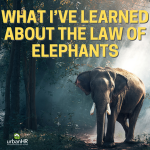
Team Building. Choose Your Reaction
Team Building: Choose Your Reaction
The Second Arrow
In the last blog I talked about mindset change models, it was quite timely, as I had been developing a series of team coaching and building workshops for a client in Adelaide.
This month is the 2nd of those workshops. And it revolves around models of behaviour change and reactions to events we have no control over. The workshop is about The 2nd Arrow.
Part 2:
An old Buddhist tale says it’s the 2nd arrow that kills the soldier. The first one will wound, but it’s how the soldier reacts to the 2nd arrow that matters.
Huffington’s post writer, Susan Bernstein, puts it like this:

The first arrow is the actual bad event, which can, indeed, cause pain. The second arrow is the suffering. That’s actually optional. You see, the first arrow is the bad event, yes this can cause pain. But the second arrow is the suffering, which is optional.

Failing to Understand Our Reaction to the First Arrow
What people often fail to understand is that our reaction to the first arrow, and whether we throw the 2nd arrow, can change the outcome of the situation.
The way we respond, whether we shoot the 2nd arrow, will make all the difference.
This links well into the concept of the Wolves, which I wrote about in the first part of this blog series. Do you feed the negativity wolf or can you realise the situation, take a step back and respond differently?
The trick is, whether you can stop yourself from shooting the 2nd arrow? Firstly, for this to be possible, you have to notice the first arrow. Yes, we get it, when you’re in the situation it’s harder to see but with the help of a few tricks you can learn to recognise the first arrow and stop yourself from firing the 2nd.
Our Innate Fight and Flight Responses
The reason why we react the way we do to stressful situations is because of our innate tendencies of fight and flight responses.

This comes from our amygdala, which is part of the limbic system and plays a central role in remembering whether something should be approached or avoided.
Back in the day when a threat was an animal the limbic brain got used to firing up our fight and flight mechanisms. This diverts oxygen from the pre-frontal cortex, the reasoning part of the brain, to the larger muscles preparing us to fight or run. Depending on our emotional intelligence, however, our brains still see threats such as stress or unpredicted change as an ‘error’ and trigger the same response as they did thousands of years ago.
What this does, however, is impairs our ability to use the pre-frontal cortex of the brain. This is in part the reasoning and problem-solving part of our brain. So when we need it the most, it switches off. Useful, right?
There is something you can do though to reduce this threat response and the team building workshop I’ve developed goes into our primary survival domains, what threatens us and why we react (especially to workplace change) in certain ways.
Plenty more can be said about neurolinguistic programming (NLP) which all of these theories lead into, and the effect on workplace change, coaching and management but for now, understand that in life, we cannot always control the first arrow.
But we can choose to fire the 2nd arrow.
Interested in bespoke team building workshops? Contact us now.
As always, should you need some help, please get in touch.





















































